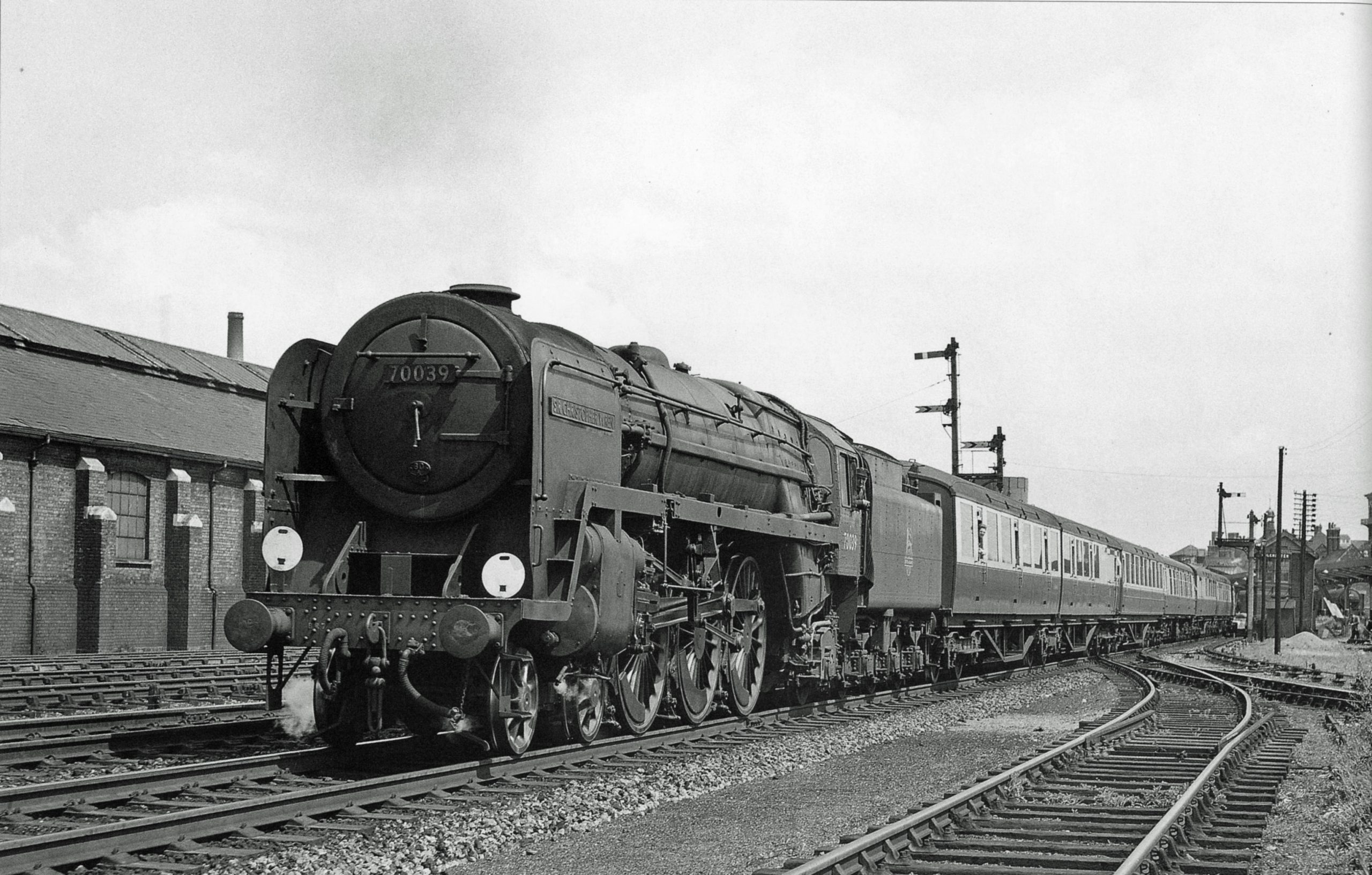11th April 2023 “Colchester in the Age of Steam” by David Goodyear

As the junction on the Great Eastern Main Line for Stour Valley line and Clacton line services, with three goods yards and a locomotive shed, Colchester was a fascinating location to observe railway operations. David Goodyear brought all this to life for us at our April meeting with a wonderful presentation spanning the first meeting of the Eastern Counties and Eastern Union Railways in 1846, through to the end of steam in 1962.
David’s coverage began with the station area, including an 1870s view of the platform, the well-known reverse curves to the West of the station with their 40mph restriction, the tragic accident on 12th July 1913 when the ‘Norfolk Coast Express’ to Cromer ran into a stationary light engine and E4 class No. 62797 on the Railway Enthusiasts Club ‘Suffolk Venturer’ excursion from Liverpool Street to Hadleigh, Snape Maltings and Eye on 30th September 1956.
The variety of traffic over the period from the 1930s onwards was vividly illustrated with numerous examples such as B17 No. 61659 ‘East Anglian’ on a Down Norwich express, WD 2-8-0 No. 90304 seen just before its transfer to March depot in 1951, D16 No. 62618 and J15 No. 65424 on Stour Valley locals, a lovely view of B2 No. 61615 ‘Culford Hall’ on the Down ‘Day Continental’ and Britannia Class No. 70039 ‘Sir Christopher Wren’ on a Harwich to Liverpool Street working, including a Gresley articulated pair in the formation. Not to be forgotten was the Great Eastern Railway’s laundry facility which covered all GER operations including shipping.
More recent variety was seen through some of BR’s earliest diesel multiple unit workings (e.g. Metro-Cammell, Cravens, Wickham and Waggon and Maschinenbau units on Brightlingsea services), Brush Type 2 No. D5578 in experimental blue livery, Hunslet 0-6-0 Diesel shunter D2554 (now preserved on the Isle of Wight Steam Railway), a gleaming English Electric Type 4 No. D205 on a Norwich express and the very early use of Class 302 25kV electric units on the then newly-electrified Clacton line.
After a short break, David focused on the three-road engine shed, illustrating its tight layout between the main line and rising land to the rear. However, there was space for numerous vintage grounded carriages which served as employee accommodation for many years. One of the ever-popular Class J70 tram engines, No. 68222, was seen, having been loaned from Wisbech from July to November 1953 to cover whilst the Hythe Branch J70 was overhauled at Stratford. B1 No. 61109 was seen on the Stratford-built turntable in 1950, having arrived with “The Oyster Special”, an excursion which ran on the last Friday in October from Liverpool Street.
After the shed we visited St Botolphs station, the location of the main goods yard for the city and home to a lovely Great Eastern No. 6 design signal box. The siding into Paxman’s Britannia works was shown, as well as much activity in the Goods Yard including the loading of an elephant into a wagon destined for Rome, to star in a film of ‘Cleopatra’!
To conclude, David took us to the fascinating Hythe Tramway, showing its lines on both sides of the River Colne, including J70 No. 68226 at Hythe Junction box and an aerial view of the gas works in the late 1950s.
We are hugely appreciative to David for opening up the wealth of interest in Colchester’s railway operations over the years, for the depth of his research and knowledge, and for sharing this with us with such passion.
The meeting closed at 9.55 p.m. with great applause from the Branch.
